How Subscription Apps Can Use Value-Based Bidding in Google Ads
By: Ashley Black, Candid Consulting
Many subscription apps still focus their Google Ads strategy on CPA bidding or optimizing for trial starts—but that approach only captures part of the story. By shifting toward value-based bidding, apps can optimize for the actual revenue and long-term returns users generate, unlocking more sustainable growth.
What is a value-based bid strategy?
Value-based bidding allows advertisers to optimize for return on ad spend (ROAS) instead of optimizing for a user’s action, which is typically predictive of revenue (e.g., start trial, complete onboarding, etc).
One of the benefits of tROAS bidding is that it allows you to dynamically pass back values so Google can adjust bids according to user value. For example, Google can drop your bid if it expects a user to be of less value to you, e.g., a non-renewing weekly subscriber. Conversely, it can increase your bid for higher value users, e,g., yearly subscribers.
Is value-based bidding a good fit for you?
While bidding toward value would seem like a good fit for all apps, that’s not necessarily the case.
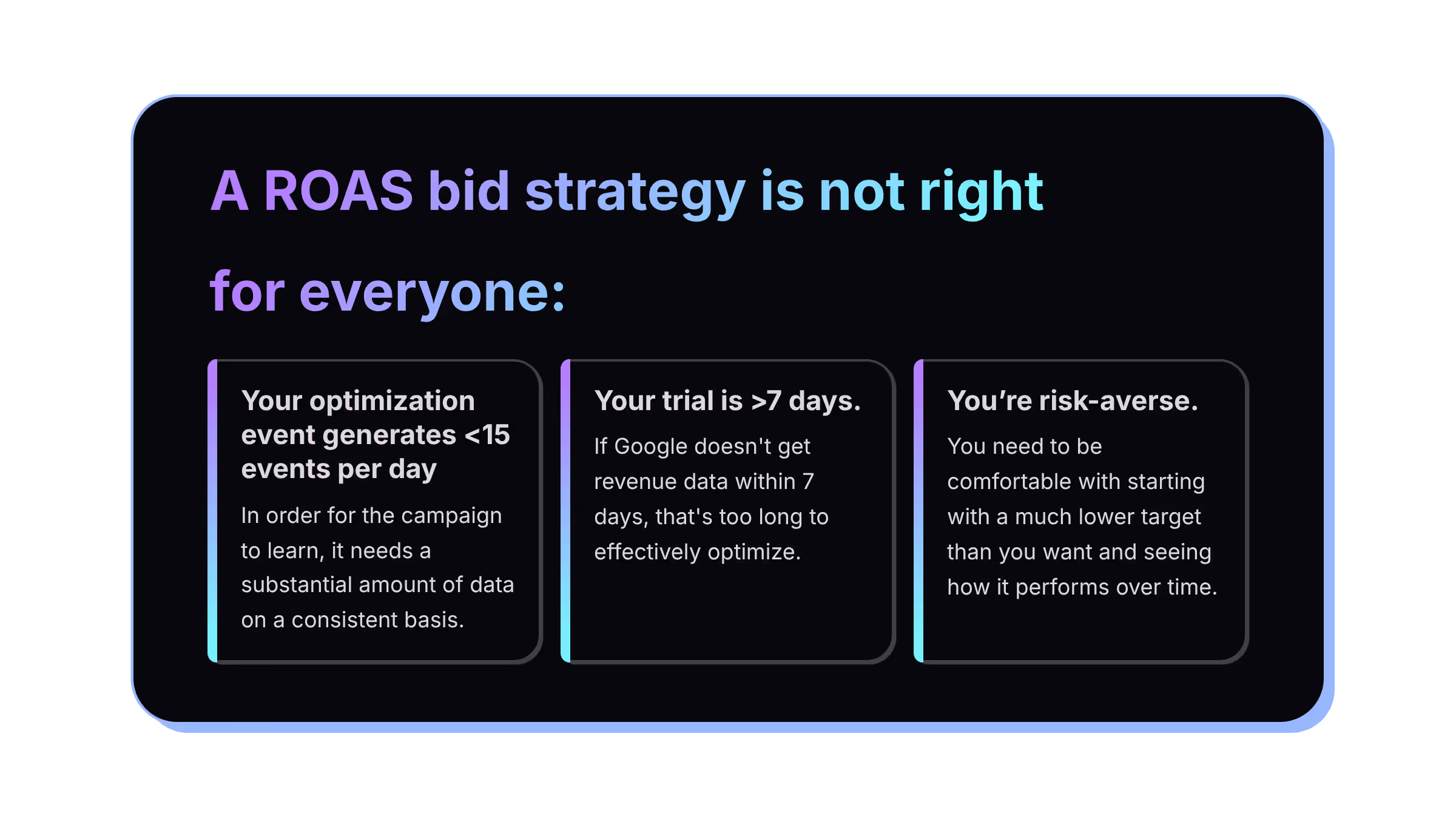
Here are a few instances where a ROAS bid strategy would not be recommended:
- Your optimization event generates <15 events per day on your CPA campaigns.
- In order for the campaign to learn, it needs a substantial amount of data on a consistent basis. If you’re only delivering a handful of purchases per day, it’s challenging for Google to understand user trends/behavior.
- In order for the campaign to learn, it needs a substantial amount of data on a consistent basis. If you’re only delivering a handful of purchases per day, it’s challenging for Google to understand user trends/behavior.
- Your trial is >7 days.
- Think of it this way: If you’re running a 7-day trial and Google delivers a click on August 1, but it doesn’t get a positive or negative signal on that user until August 8, that leaves August 2-7 for Google to be in the dark. And that’s for a 7-day trial! Imagine a 14-day or 30-day trial. That’s too long for Google not to have a signal, and ultimately could lead to a lot of wasted spend.
- Think of it this way: If you’re running a 7-day trial and Google delivers a click on August 1, but it doesn’t get a positive or negative signal on that user until August 8, that leaves August 2-7 for Google to be in the dark. And that’s for a 7-day trial! Imagine a 14-day or 30-day trial. That’s too long for Google not to have a signal, and ultimately could lead to a lot of wasted spend.
- You’re risk-averse.
- tROAS bidding can take time to get right. You need to be comfortable with starting with a much lower target than you want and seeing how it performs over time. If this feels like too much of a gamble, you may need to reconsider.
How to set up a ROAS campaign in Google
Step 1: Setting up a ROAS campaign requires that you bid on Firebase events. So before doing anything else, make sure you have Firebase set up and are passing the value and currency from Firebase for each relevant purchase event. If you have more than one purchase-related event, make sure to check the settings for each of them.
Also, it’s important to pay attention to the “post-install conversion window” and the “click-through conversion window”. These windows will inform the campaign on how quickly they should be returning your target ROAS goal. For example, if you have a ROAS bid of 50%, the conversion window indicates you want that return within 2 weeks.
As general guidance, conversion windows should typically be the amount of time it takes for ~90% of users to complete that action.
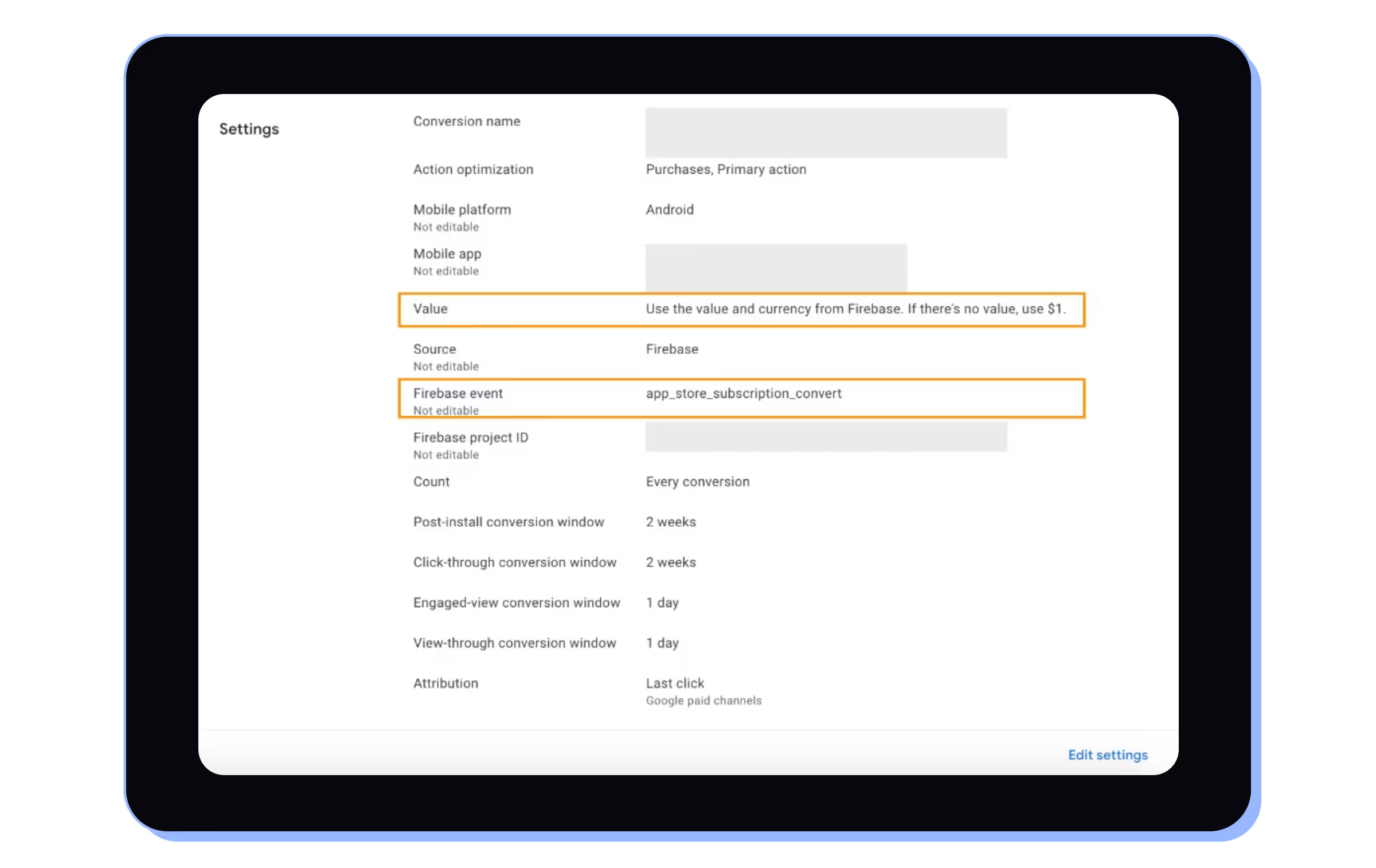
Example of a Firebase event for “subscription convert” in Google Ads.
Step 2: After verifying all conversions are set up correctly, you can create your ROAS campaign. Once you get to the “bidding” section of the build, you’ll see the option to select “in-app action value” as the bid type. This is the tROAS campaign type.
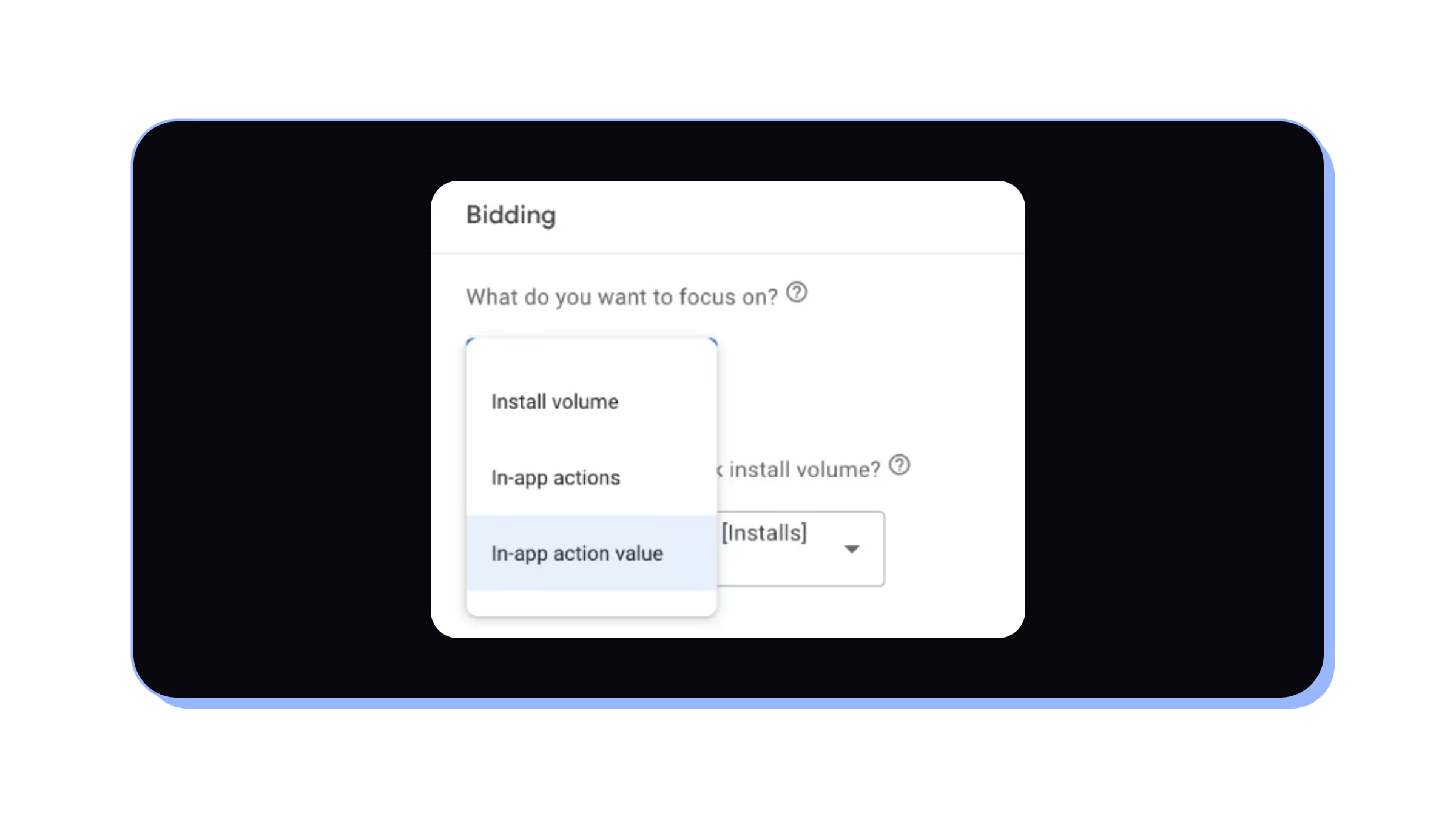
Step 3: Select the purchase event(s) you want the campaign to optimize for. For most subscription apps, this will be “app_store_subscription_convert” which is when the user is officially charged for the subscription (i.e., post trial period if offering a trial). However, if there are other ways a user can make a purchase, be sure to include those events as well.
Next, enter the ROAS percentage you want the campaign to achieve. BUT don’t be greedy here! It’s best to start off at least 20% what you want in order for the campaign to get volume at launch. In some cases, it may be necessary to go even lower than that when starting out.
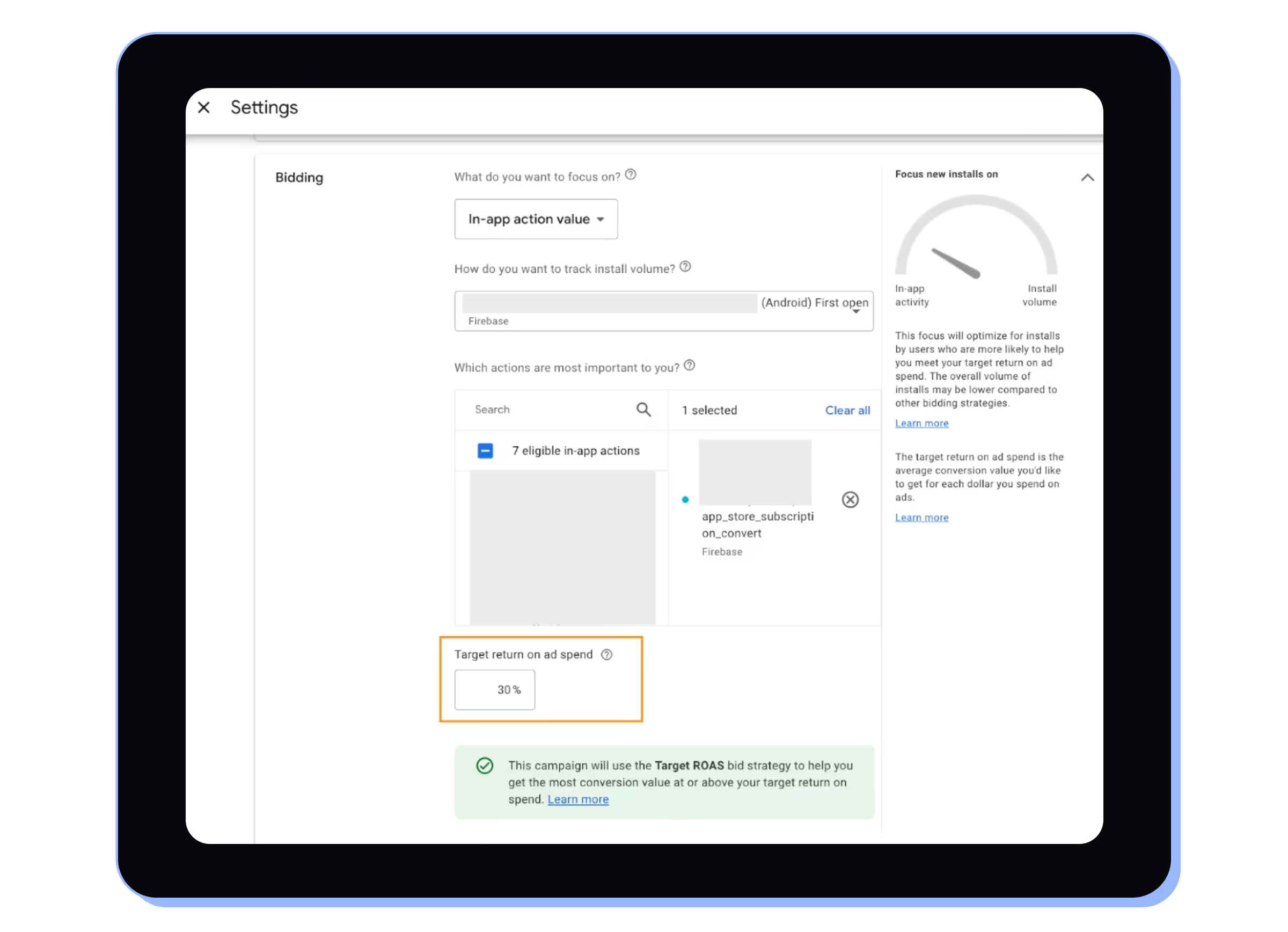
Challenges with tROAS bidding
1. Scale
While many advertisers see stronger results running tROAS vs. CPA campaigns, scaling the campaigns can be a challenge. For that reason, it may be necessary to assign values to non-revenue events and add them to the campaign(s) as optimization events.
For example, if only optimizing for “subscription_convert” events is limiting your scale, you could add another event like “start trial” with a low static value as an optimization event. This requires some analysis to determine that value, but can help increase spend/conversions as it increases the data Google can use to optimize.
2. Long tests
Unlike a CPA campaign which may optimize for events that happen within 24 hours, tROAS campaigns may not get event signals back for 3-14 days (depending on the duration of your trial period). By the time you find the sweet spot between scale and performance, this campaign type can take weeks to months to fully assess.
3. A/B testing
If you’re actively running a CPA campaign and looking to test tROAS, the best practices for a proper A/B test can be cumbersome. Google recommends two options:
- A complete pause of CPA campaigns and switching to tROAS: this is probably the cleanest, but also means you may lose substantial volume during the testing phase
- A geo-split campaign: taking one market (or grouping of markets/states) and creating a new CPA campaign and then creating a new tROAS campaign targeting a similar market/grouping of states.
- Here’s an example of how one app split the US market into two test campaigns that were comparable in spend and purchase volume.
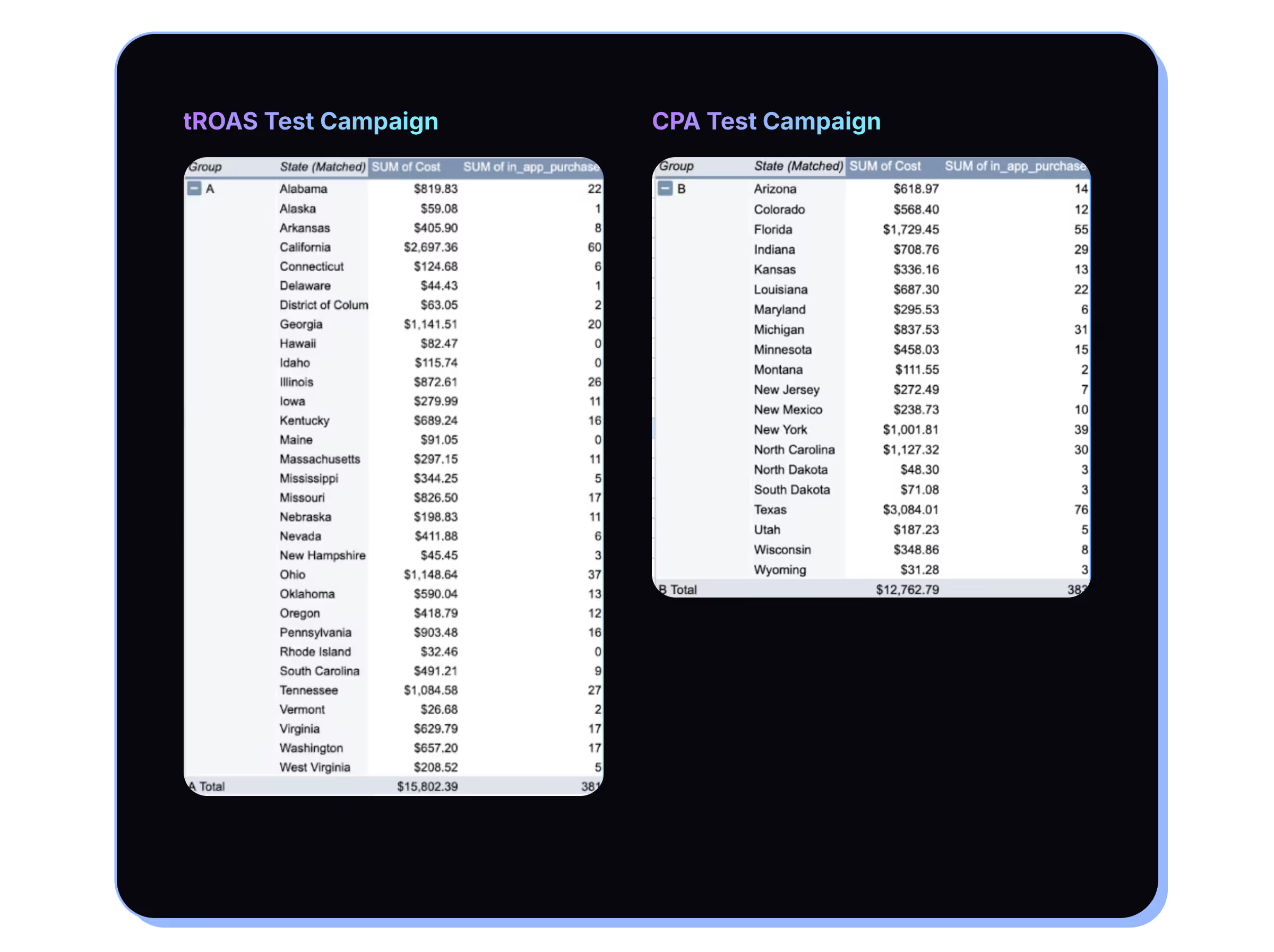
This isn’t a hard-requirement, but Google recommends this approach to deliver the cleanest test. Up to you if you decide to approach this way.
Reporting and optimization
If you want to see asset-level ROAS data, you likely need to create a custom column.
When creating a custom column, select “All conversion value” as your first field and then select the corresponding conversion action(s) you want to track the value from. Divide that over “cost”.
This will allow you to see the value at a much more granular level than using Google’s preset columns. Creating a custom report will also let you customize this to a greater degree.

iOS vs. Android
tROAS for Android has been a bid type for a long time, whereas iOS tROAS is relatively new. tROAS for Android is a pretty stable product, and has delivered really great results for a lot of advertisers. Keep in mind that Google still models most of its conversions on iOS, so you will likely see large discrepancies between Google’s reporting and other reports (e.g., SKAN).
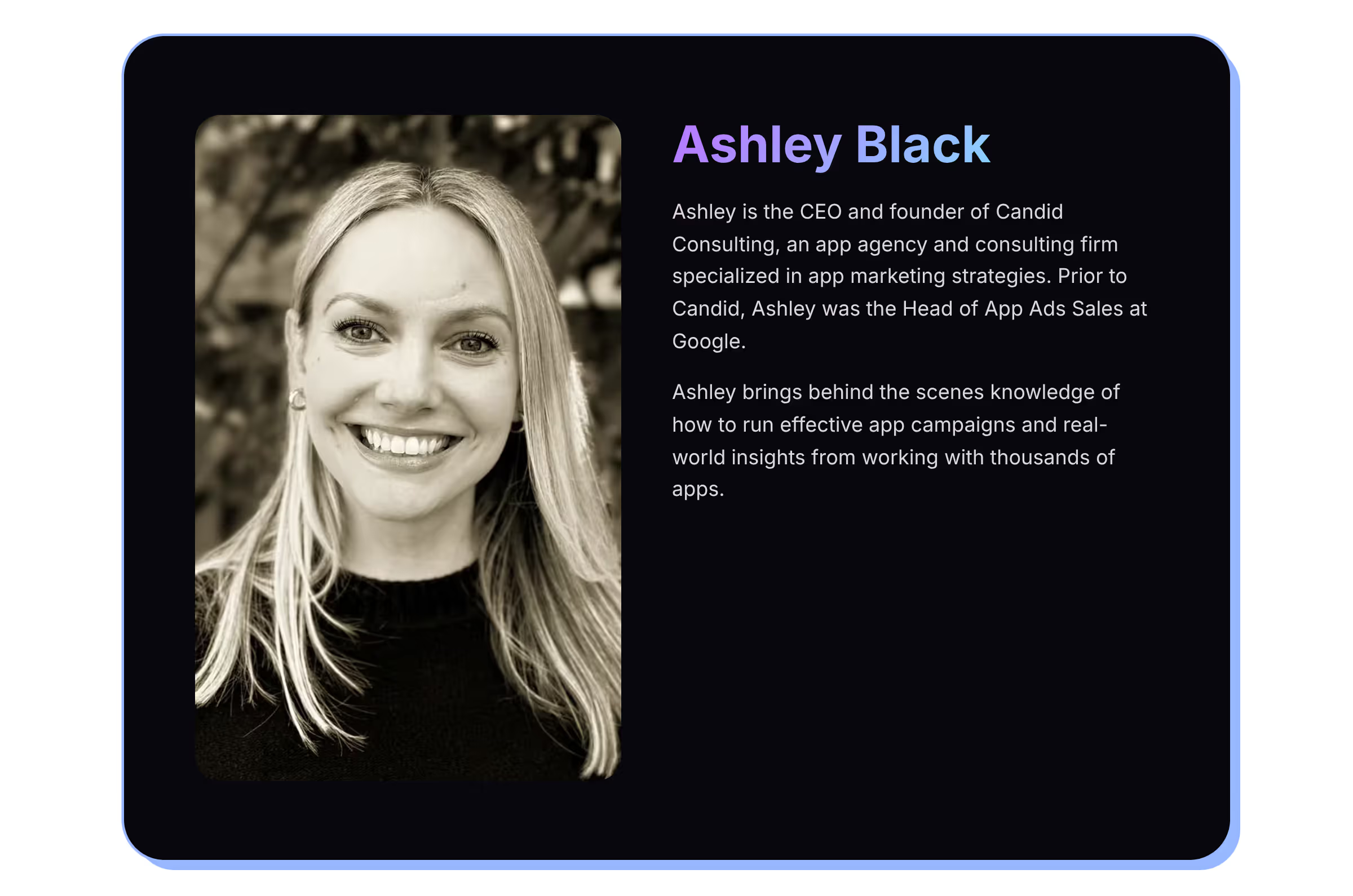
ashley@candidconsultinggroup.com




















.svg)
.svg)
.svg)
.svg)
.svg)
.svg)

.svg)
.avif)

.svg)

.svg)

.svg)

.svg)

.svg)

.svg)

.svg)

.svg)

.svg)
.svg)
%20(1).svg)

.svg)
.svg)
%20(1).svg)

.svg)

.svg)
.svg)
.svg)
.svg)
.svg)
.svg)
.svg)
.svg)
.svg)
.svg)
.svg)

.svg)

.svg)
.svg)
.svg)

.svg)
.svg)
.svg)
.svg)
.svg)
.svg)
.svg)

.svg)

.svg)
.svg)
.svg)

.svg)
.svg)
.svg)
.svg)
.svg)

.svg)

.svg)

.svg)
.jpg)

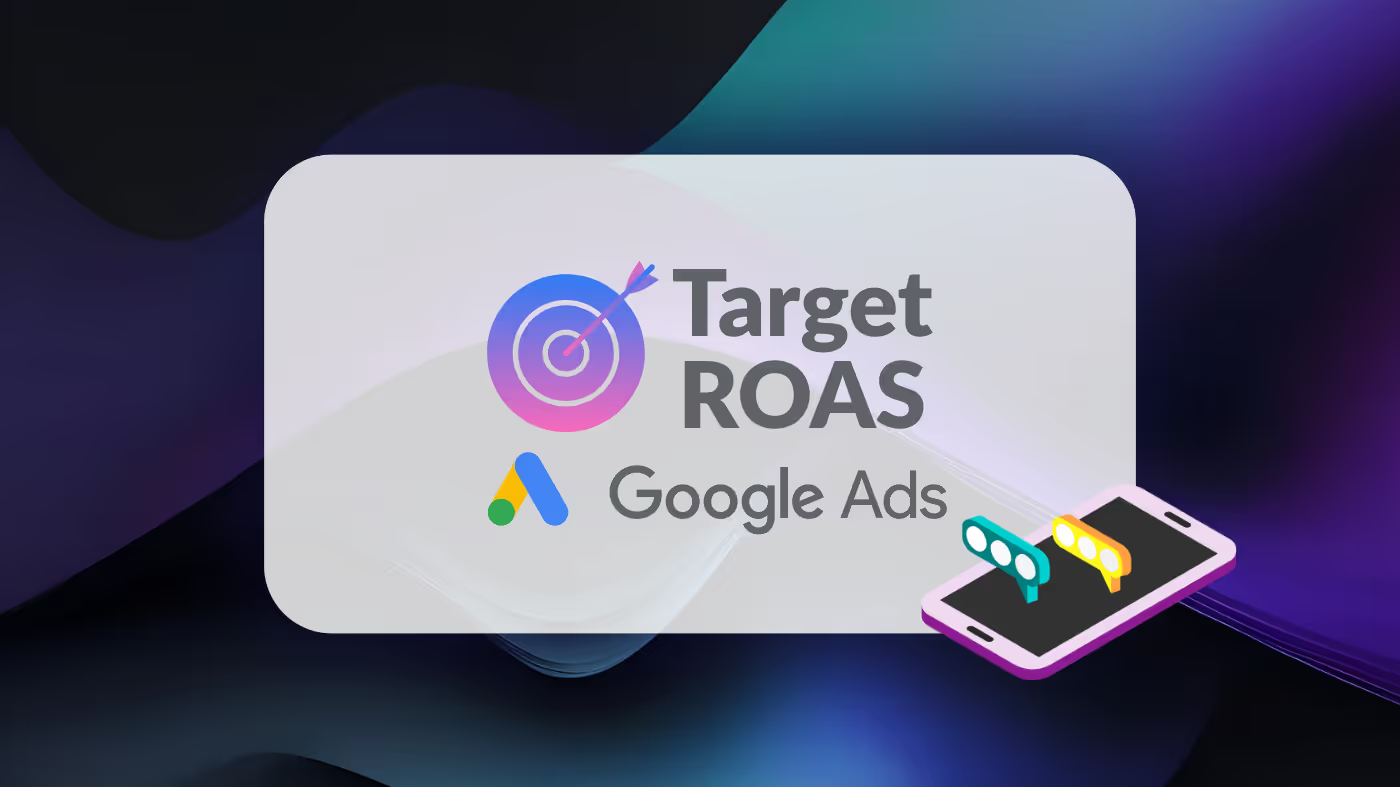
.svg)
.svg)


.svg)
.avif)

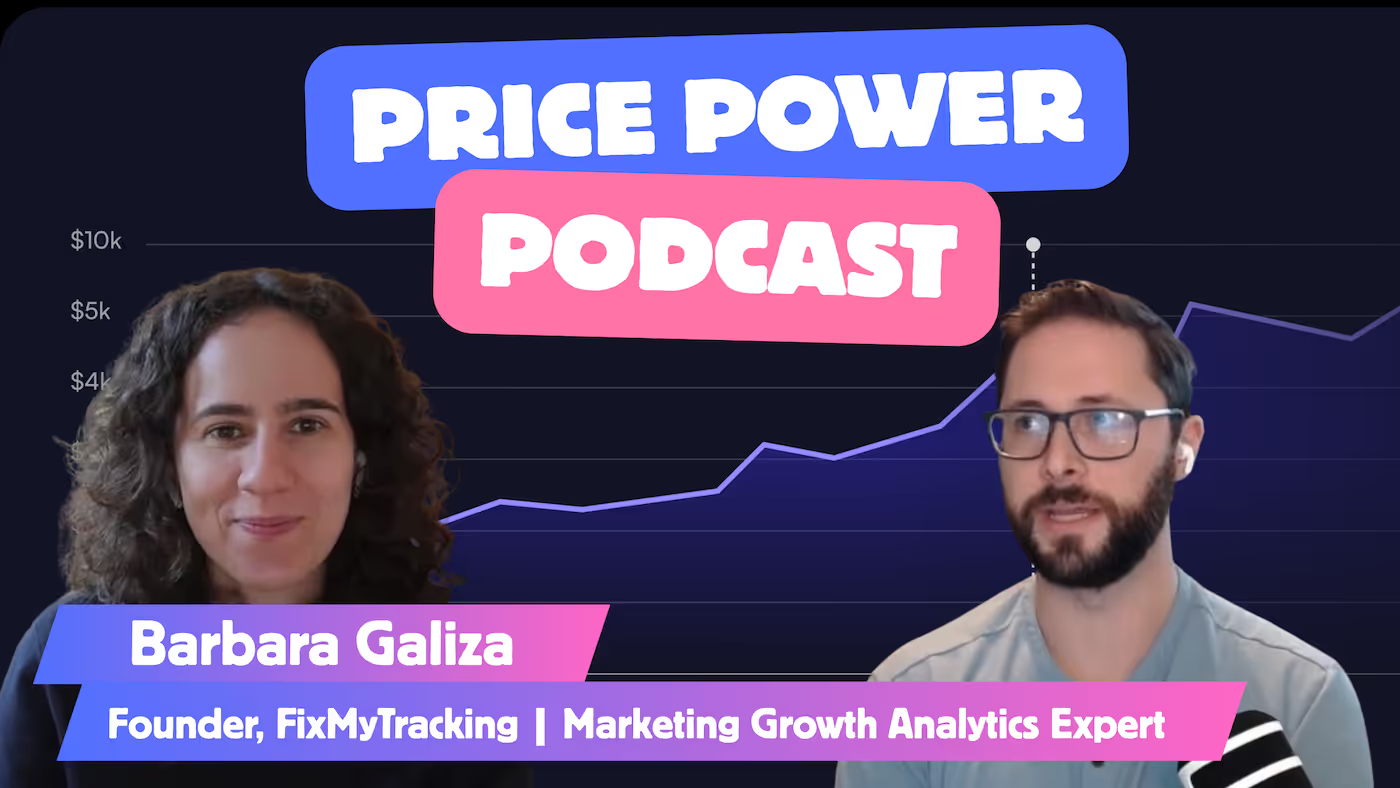
.avif)
.avif)


